Willow Wattle
Back | Salinity Indicator Plants Home | Common name home | Scientific name home | Photo Gallery | Glossary
Family: Wattle (Mimosaceae) |
| Scientific Name: | Acacia salicina | 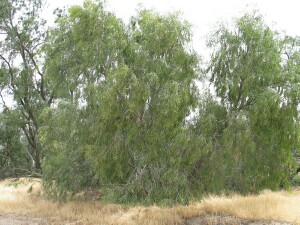 Willow Wattle trees Photo: A J Brown | ||||||||
Status: | Native across Australia except for Tasmania and Western Australia. | |||||||||
Other Common Names: | Cooba, Coobar, Koobah, Doolan, Black Sally Wattle, Native Willow, Broughton Wattle, Swamp Wattle | |||||||||
Plant Description: | Shrub to tree, to 20 m high, with willow-like pendulous branches and drooping leaves (phyllodes). Phyllodes 4-12 cm long and 4-20 mm wide, dark green with one prominent central nerve. Flowers pale yellow or gream, in globular heads 5–7 mm diameter which are borne singly or in short racemes of 2–10 heads in the leaf axils. Flowering mostly summer – autumn. Pods are straight, 3-12 cm long and 6-10 mm wide, pale greyish brown when mature, with thick edges. Although the pods are irregularly constricted between the longitudinally arranged seeds, they rarely break up easily into individual cells. | |||||||||
Habitat: | Growing along creeks, rivers, moist stream beds, flood-plains and gentle slopes, across North-west and Northern parts of Victoria. Often on clay loam to clay soils but will grow on lighter soils. Tolerant of highly alkaline soils, waterlogged conditions and high salinity.
| |||||||||
Comments: | Similar to Eumong or River Cooba (Acacia stenophylla) which generally has narrower and longer leaves and strongly constricted and easily fragmented pods. Bark was traditionally used by Aboriginal peoples for tanning skins, medicine and fish poison (high tannin content) while seeds were eaten. Good for fence posts. |
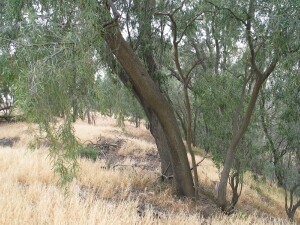 Trunks of Willow Wattle Photo: A J Brown | 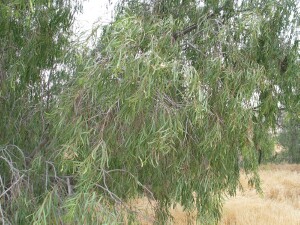 Weeping branches of Willow Wattle Photo: A J Brown |
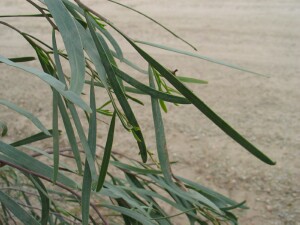 Leaves of Willow Wattle Photo: A J Brown | 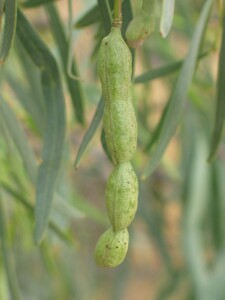 Willow Wattle seed pod Photo: A J Brown |
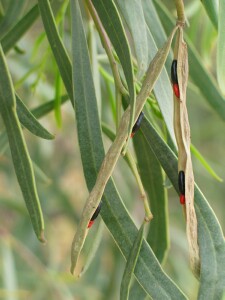 Mature pods of Willow Wattle Photo: A J Brown |  Willow Wattle seed Photo: A J Brown |


